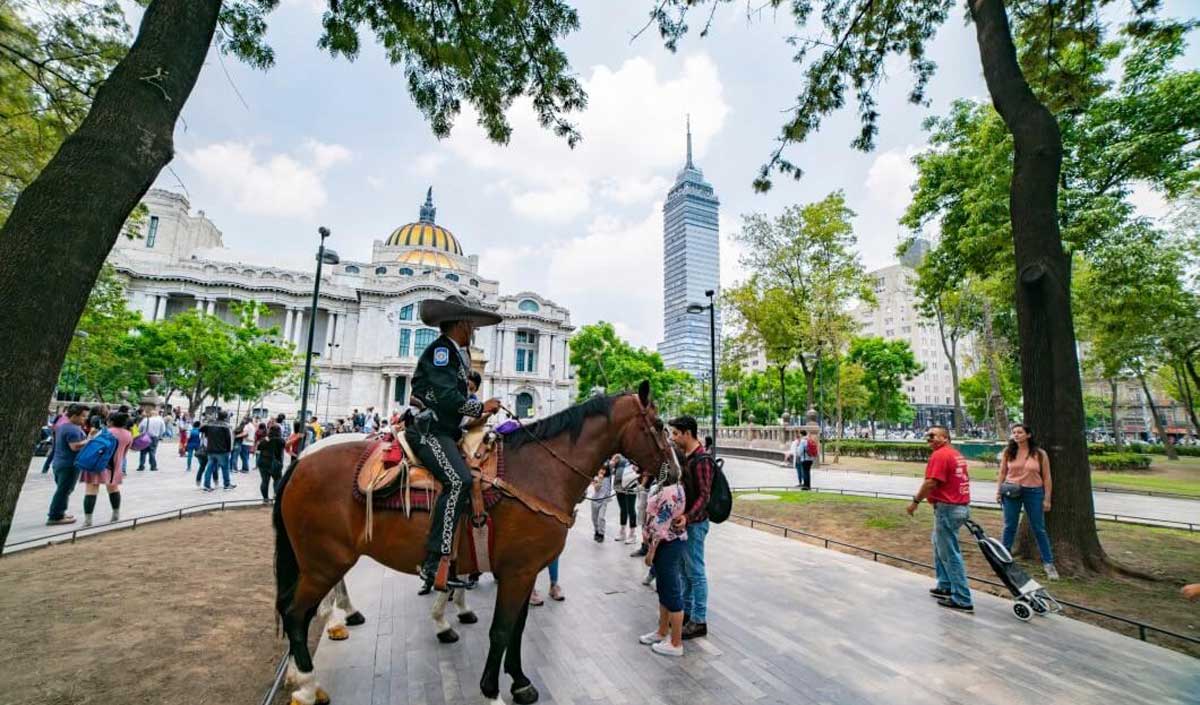Despite the authorities’ efforts to present an optimistic safety outlook, negative perceptions of the current strategy are growing and affecting Mexican tourism.
Tourism is one of the main economic activities in the country. While the domestic market is the main driver of this activity, since 82.1 pesos of every 100 pesos consumed by tourists is from domestic visitors and the remaining 17.9 pesos is spent by visitors from abroad, the international market is very important. It should be noted that 8 out of every 10 international tourists in Mexico are from the USA, so the sector has an important connection with the development dynamics of our northern neighbor.
One of the hardest-hit sectors over the past two years has been the tourism sector as a result of the pandemic. In 2020 alone, the number of international visits decreased by 46% compared to 2019, and by 29.2% in 2021. Before the pandemic, Mexican tourism accounted for 8.7% of national GDP, and although it currently stands at 7.1%, these figures can be predicted to improve as the sector is in a clear recovery phase.
The Ministry of Tourism (SECTUR) noted that Mexico is in second place among the countries that showed the largest recovery in the first quarter of 22, according to the UNWTO Tourism Barometer. The organization places Mexico in second place in terms of income, down 3.9% from the record it received in the same period in 2019. It was overtaken by Turkey, a country that is 17.4% higher.
In this regard, Mexico is ahead of such countries as France, Spain, Italy, and Germany.
Miguel Torruco Marquez, head of Sector, added that Mexico could reach between 55% and 70% of pre-pandemic levels of international tourist arrivals this year, based on various analyzes from the World Tourism Organization. Unfortunately, the ongoing violence in the country threatens all positive trends.
On June 13, the US State Department released a document on the situation with crimes – such as murders, kidnappings, car theft, and robberies in general – in Mexico. The document is disturbingly long.
First, five states are listed that are simply advised not to go: Colima, Guerrero, Michoacán, Sinaloa, and Tamaulipas. Secondly, there are 11 states that are recommended to “reconsider” a trip due to high risk: Baja California, Chihuahua, Coahuila, Durango, Guanajuato, Jalisco, Mexico, Morelos, Nayarit, Sonora and Zacatecas. Finally, 14 states are listed as “high risk” if you want to visit them: Aguascalientes, Baja California Sur, Chiapas, Hidalgo, CDMX, Nuevo León, Oaxaca, Puebla, Queretaro, Quintana Roo, San Luis Potosi, Tabasco , Tlaxcala and Veracruz. Only two states in Mexico have normal travel conditions – Campeche and Yucatan.

In addition to the optimism of the authorities, the negative perception of the security strategy in the country is increasing every week. A simple look at last week’s news shows us the structural failures of the strategy: attacks on tourists in Cancun, damage to businesses in Chilpancingo, security operations in Michoacán, clashes between criminals and law enforcement in Mexico City, and armed intimidation of a large group of people in San Cristobal de Las Casas, Chiapas.
A recent report published by the Mexican government is an example. Even when it is emphasized that “from 94 murders per day in January-May 2019, we are now at 84, which represents a decrease of 10.8% compared to 2021”, the economic consequences caused by violence or other criminal activities such as extortion are becoming more serious.

